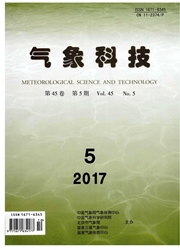

 中文摘要:
中文摘要:
应用NCEP再分析资料,根据2005—2006年江淮地区夏季33个对流云合并的个例发生的条件和环流背景分析研究,得出了对流云合并发生的5种天气系统类型:华北槽前型、华北槽后型、副高内部型、副高外部型和东风系统型;不同的天气系统类型触发对流云合并的热力学和动力学物理条件也不同;山区地形对地面气温和能量的影响与对流云的发生和合并有密切关系。
 英文摘要:
英文摘要:
With the NCEP/NCAR reanalysis data,the background conditions,under which 33 cases of convective merger occurred in the Jianghuai region during the summers of 2005 and 2006,are analyzed.It is shown that these circulation patterns for merging can be classified into five types: merging before a trough in North China,behind a trough in North China,inside a subtropical high pressure,outside a subtropical high pressure,and inside an east wind system.The dynamic and thermodynamic conditions triggering the five kinds of convective merging are different.In addition,the impact of the mountainous terrain on ground temperature and energy is closely related to the occurrence and merging of convective clouds.
 同期刊论文项目
同期刊论文项目
 同项目期刊论文
同项目期刊论文
 期刊信息
期刊信息
